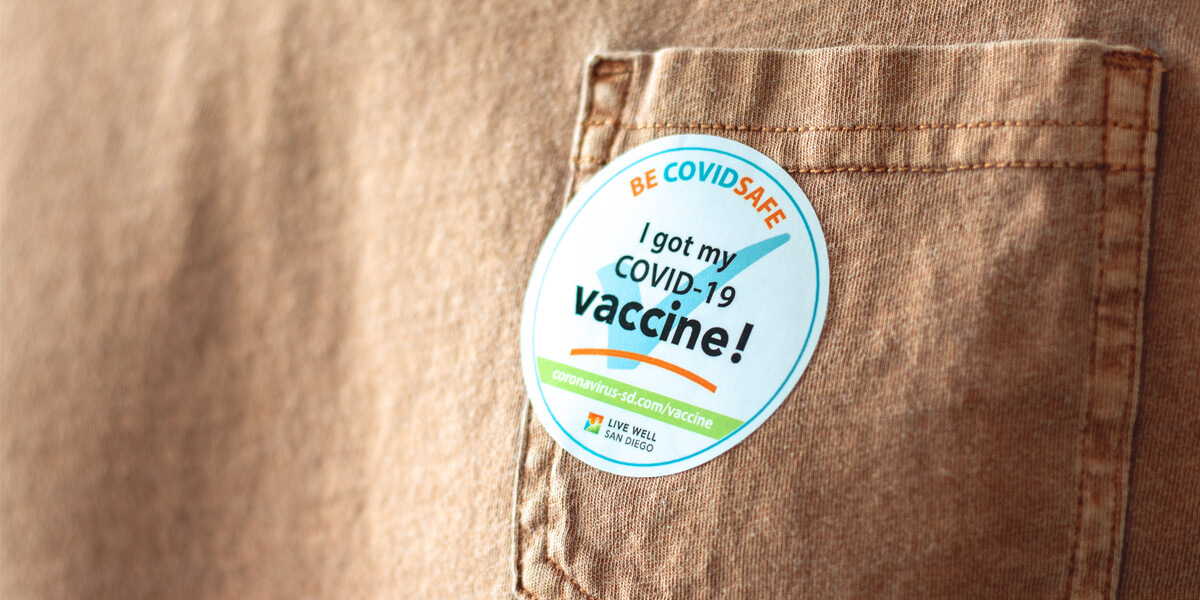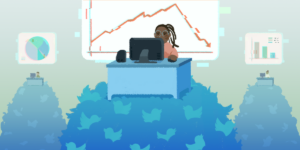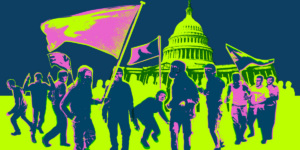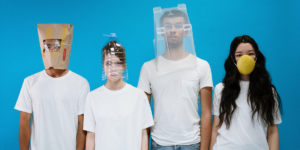
A recent poll found a quarter of American adults said they would refuse a Covid-19 vaccine. Photo/Unsplash.
Though Covid-19 vaccines are widely available, myths and misinformation continue to circulate on social media, contributing to vaccine hesitancy across the country. In fact, according to a recent poll by Monmouth University, a quarter of American adults said they would refuse a vaccine.
For the past year, Yan Liu, a USC computer science professor, and PhD student Karishma Sharma have been analyzing Covid-related misinformation on social media. Their new study, currently in pre-print, examines the social media influences behind vaccines hesitancy.

Professor Yan Liu (left) and PhD student Karishma Sharma analyzed vaccine minsinformation on Twitter.
How can social media influence people’s likelihood to get vaccinated?
YL: Vaccines are an important step to preventing severe illness from Covid-19. However, we found communities of people on social media who strongly oppose vaccination and its benefits. As a result, they engage in disinformation and conspiracies to suggest vaccines are unsafe or ineffective. In our latest study, we found this influences some groups of social media users, and could reduce the intent to vaccinate.
How prevalent is this problem and who is being targeted?
KS: Our analysis unearthed a large anti-vaccine misinformation and conspiracy community. The initial dataset contained nearly 30 million tweets from almost 7.5 million accounts related to Covid-19 vaccines. From here, we filtered out users with fewer than 5 observed vaccine-related tweets. This left us with about 10,000 accounts, which were actively engaged in Covid-19 vaccine discussions. Within this group, we found 16% of accounts were spreading anti-vaccination misinformation. The anti-vaccine misinformation community accounts with identified geolocations were distributed across the US and UK. There was evidence of other smaller anti-vaccine communities in different languages, including Spanish, French and Italian.
We also found that both the far-right leaning conspiracy community and the large anti-vaccine misinformation community influence users in right-leaning communities—those who follow top Republican political figures.
What techniques or conspiracy theories are used by anti-vaccination groups to influence the conversation around vaccines?
YL: Anti-vaccine misinformation is often accompanied by anti-social messages such as #notocoronavirusvaccines, #livingnotlockdown, #masksdontwork. The politically-motivated “Great Reset” conspiracy also promotes anti-vaccine messages, and shows patterns of coordinated accounts colluding to share the same agenda and promote the conspiracy.
The coordinated conspiracy group narratives focus on the pandemic being a hoax and denounce the Canadian Prime Minister Justin Trudeau and Bill Gates. In terms of social messaging, the group is rife with anti-vaccine, anti-masks, and anti-lockdown messaging. In contrast, the top hashtags in “normal” accounts are more general and tend towards positive social messaging (#wearamask, #healthcare, #staysafe, #washyourhands) regarding vaccines and prevention protocols.
What propaganda techniques are used by anti-vaccination groups to influence the conversation around vaccines?
YL: Anti-vaccination groups use all the five techniques of science denial: fake experts, logical fallacies, impossible expectations, cherry-picking, and conspiracy theories. When Covid-19 vaccine side-effects are discussed, rarer, but more serious side effects are emphasized – such as paralysis, allergic reaction, cancer—versus more common side-effects like headache and fatigue. Scientific facts are manipulated, along with misinformation about the vaccine rollout and conspiracy theories.
“When Covid-19 vaccine side-effects are discussed, rarer, but more serious side effects are emphasized.” Yan Liu.
Also, misinformation narratives tend to use both reliable information from rare side-effects, and baseless false claims to suggest vaccines are unsafe, or set-up unscientific impossible expectations–for instance, that vaccines don’t prevent infections and are therefore meaningless. These factors highlight the possible impact and help us understand the need and type of targeted social interventions needed to reduce vaccine skepticism.
Did you see evidence that this could lead to more vaccine hesitancy?
KS: The community of right-leaning US accounts that retweet top Republican accounts are strongly influenced by the anti-vaccine misinformation and far-right conspiracy groups, and more distanced from mainstream and health news, and pro-vaccine or neutral communities.
Moreover, vaccine uptake in different US states is negatively correlated with the rate of misinformation, with Republican and swing states having the lowest vaccination rates and highest rates of misinformation. Therefore, social media discussions could have an influence on increasing vaccine skepticism in certain demographics.
“Vaccine uptake in … US states is negatively correlated with the rate of misinformation, with Republican and swing states having the lowest vaccination rates and highest rates of misinformation.” Karishma Sharma.
What trends did you find in the data? Is the misinformation random or coordinated?
YL: The Great Reset conspiracy, which claims that world leaders orchestrated the pandemic to control the global economy, started trending on Twitter when a video of Canadian Prime Minister at a UN meeting went viral, saying the pandemic provided an opportunity for a “reset.”
In our COVID-19 vaccine dataset, we found likely coordinated efforts promoting this conspiracy. The Great Reset conspiracy group we identified, comprising 7,000 suspicious accounts, has a strong anti-vaccine stance and promotes misinformation about the vaccine, in addition to anti-lockdown and anti-vaccine passport messages.
This was detected by our “coordinated activity detection” method that models the hidden influence between accounts. From a random sample of 500 accounts analyzed, 40% were detected to be bots. Our research has found that misinformation campaigns involving coordinated efforts from groups of malicious accounts manipulating public opinion have become increasingly prevalent during the pandemic.
How can social media users tell the difference between real vaccination information and social media misinformation?
KS: Social media users might get a biased picture about vaccine safety based on discussions only of rarer side effects, and chances of being subjected to anti-vaccine disinformation. Therefore, they should trust official sources and receive more balanced information about Covid-19 vaccines.
Published on June 30th, 2021
Last updated on July 2nd, 2021












